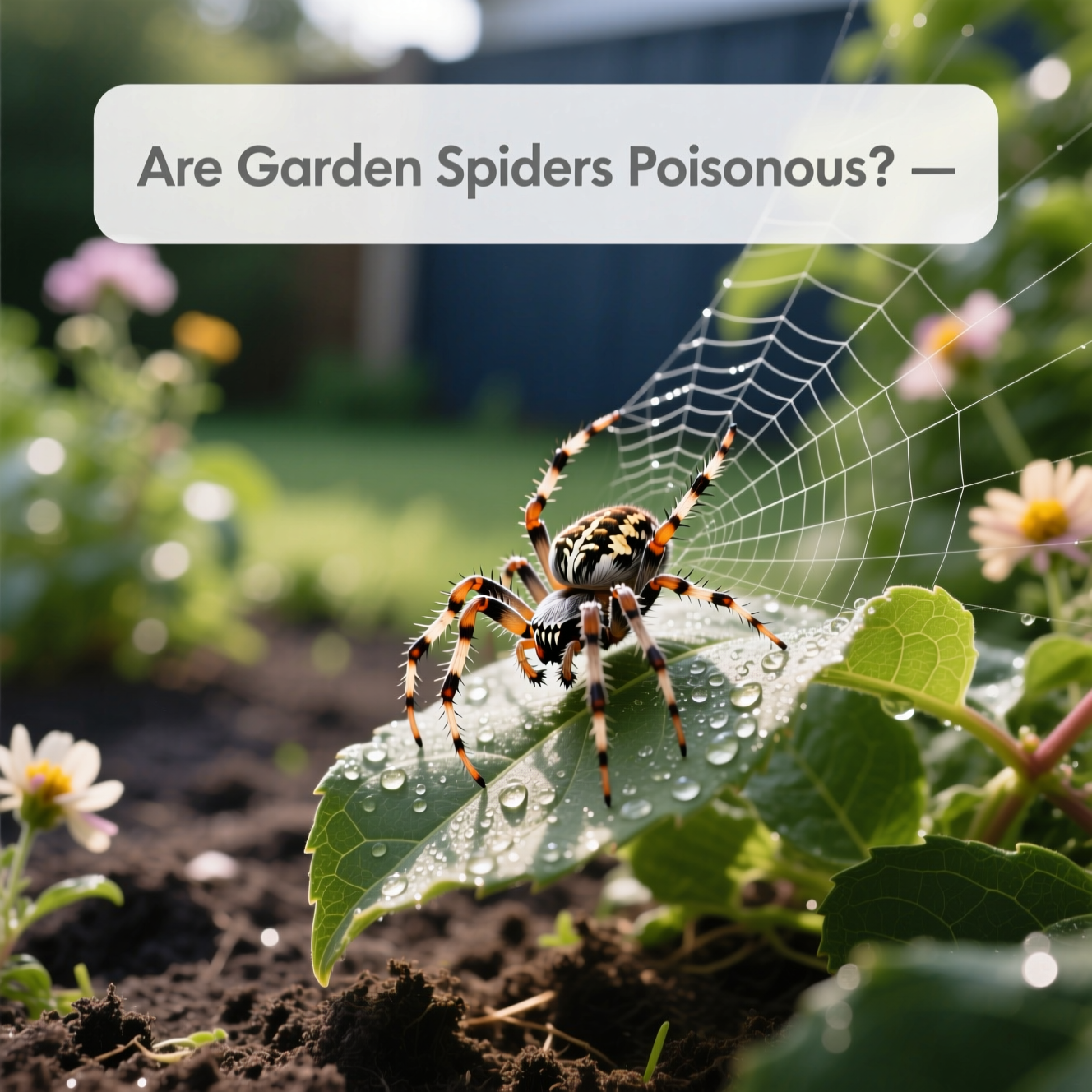Are Garden Spiders Poisonous?
Common garden spiders are not poisonous. This distinction is crucial; poisonous means harmful if ingested, while venomous means harmful if injected, typically through a bite or sting. Almost all spiders possess venom. However, only a tiny fraction pose a medical risk to humans from direct contact. For most gardeners, encountering these arachnids presents no toxic threat.
The vast majority of garden spiders are beneficial predators. They regulate insect populations, consuming pests that damage plants. Recent studies consistently show less than 0.5% of all spider species are considered medically significant to humans. This means their venom is not potent enough to cause severe harm through typical encounters. Their impact resistance and UV stabilization are important for longevity.
Are All Spiders Poisonous or Venomous?
Understanding spider toxicity is crucial for many people. Virtually all spiders are venomous, possessing specialized glands that produce venom. This potent cocktail of enzymes and neurotoxins is delivered through their fangs, known as chelicerae. Spiders utilize this venom primarily as a predatory tool to immobilize their prey. However, the concern for humans lies in whether this venom is medically significant.
In practical terms, the sheer number of spider species highlights this distinction. Over 48,000 known species of spiders exist globally. While nearly all possess venom, only a minuscule fraction have fangs strong enough and venom potent enough to cause severe harm to humans. For most gardeners and homeowners, this means that while technically venomous, the vast majority of spiders pose no real threat.
How Do Spiders Become Venomous?
Spiders develop venom through a remarkable process of evolutionary adaptation. This potent biological weapon is not acquired but innate, stemming from specialized glands. Modern understanding of spider venom highlights its crucial role in predation and survival.
Spider venom is a complex cocktail of biochemical compounds. These primarily include proteins and peptides evolved for prey paralysis and initial digestion. This sophisticated adaptation provides a significant predatory advantage. For most spiders, venom is essential for subduing prey larger than themselves. In practical terms, this allows them to conserve energy and avoid injury.
The effectiveness of spider venom is well-documented. Spider venoms can contain dozens of different active compounds, tailored for specific prey. This intricate system of chemical warfare demonstrates a long history of co-evolution with their food sources, ensuring efficient nutrient acquisition and species propagation.
Are Garden Orb Spiders Poisonous or Dangerous?
Garden orb-weaver spiders, particularly those within the Ohio State University Extension‘s identified Argiope genus, are not poisonous. Their venom is not medically significant to humans. These orb-weaver spiders are remarkably docile creatures. They play a beneficial role in the local ecosystem by preying on insects.
In practical terms, garden orb spiders are not dangerous. Their bites are infrequent occurrences. For most gardeners, their presence is a sign of a healthy garden environment. The technical details indicate their venom has low toxicity for mammals. Bites typically result in localized pain and mild swelling. This discomfort usually resolves within 24 to 48 hours, comparable to a bee sting.
Modern best practices emphasize appreciating these arachnids for their pest control capabilities. Their webs demonstrate intricate engineering. Their impact resistance ensures they can withstand environmental factors. Understanding their non-aggressive nature reduces unwarranted fear, promoting coexistence within the garden.
Are Garden Spiders Aggressive?
Most garden spiders exhibit minimal garden spider aggression towards humans and pets. They are typically shy creatures, prioritizing an escape response when sensing a physical disturbance. Their natural inclination is to flee or conceal themselves rather than confront potential threats. Understanding this spider behavior is key to appreciating their role in the garden.
Directly confronting a garden spider is generally unnecessary. They are not inherently aggressive and will only bite defensively if directly threatened or handled. Reports of garden spider bites on humans are exceedingly rare, often occurring only when the spider is accidentally trapped against the skin. This emphasizes their non-confrontational nature and escape response as primary defense mechanisms.
In practical terms, garden spiders are beneficial predators. Their presence signifies a healthy ecosystem, helping to regulate insect populations. For most gardeners, their minimal interaction with humans and non-venomous disposition make them valuable, harmless garden inhabitants. Their territoriality is focused on prey, not confrontation with larger beings.
Are Spiders Bad for Your Garden?
Spiders are highly beneficial for gardens, not detrimental. They act as natural predators, significantly reducing pest populations. This pest control enhances overall plant health and garden vitality.
These beneficial insects are crucial for maintaining biodiversity. A single spider can consume hundreds of insects over its lifetime. This role is vital for Integrated Pest Management (IPM) strategies. They control aphids, caterpillars, and flies effectively.
Which Spiders Are Poisonous and How Can You Identify Them?
Identifying truly venomous spiders is crucial for safety. The few spiders considered medically significant to humans are primarily the widow spiders and recluse spiders. These venomous spider characteristics are key to their recognition and avoiding encounters. For most people, understanding these distinctions enhances preparedness.
The Black Widow (Latrodectus) and Brown Recluse (Loxosceles) spiders are the most commonly cited dangerous spiders. Widows are often identified by a distinctive red hourglass marking on their underside, while recluse spiders typically display a violin-shaped pattern on their cephalothorax. Understanding their venom potency is important; however, bites from medically significant spiders are rare, and fatalities are even rarer, especially with prompt medical attention.
In practical terms, distinguishing these species involves observing their physical markings and understanding their typical habitats. Current best practices emphasize appreciating these spiders from a safe distance rather than attempting to interact with them. For most gardeners and homeowners, this knowledge promotes coexistence and reduces unnecessary alarm.

Tyler Grant runs our Tools & DIY testing lab, putting pruners, hoses, drip kits, and raised-bed systems through real-garden use. He documents builds, timings, and durability to deliver honest pros/cons and clear recommendations across budgets. Tyler’s guides include safety callouts, maintenance checklists, and step photos you can follow in a weekend.

